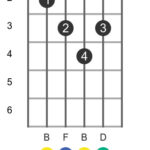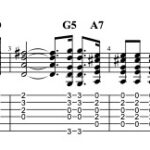Lap steel guitars stand as a unique and fascinating branch in the diverse family of guitars. Unlike standard guitars played upright, the lap steel guitar is designed to be played horizontally, typically resting on the player’s lap – hence the name – or a stand. This horizontal orientation is just the first clue that playing a lap steel is a distinctly different experience compared to traditional guitar playing.
The most fundamental difference lies in how notes are produced. On a standard guitar, we press strings down onto frets. However, with a lap steel guitar, you’ll notice the absence of frets in the conventional sense. Instead, players use a smooth, solid object called a slide or tone bar, usually made of metal, to manipulate the strings. By gliding this tone bar lightly across the strings and adjusting its position, musicians create the instrument’s characteristic gliding notes and evocative sounds.
While standard slide guitar players (those who play slide on a regular, upright guitar) might use glass, ceramic, or brass slides, lap steel players almost universally prefer metal slides. This preference stems from the higher string action – the strings are intentionally set further from the body of the guitar on a lap steel. This higher action allows for the use of a heavier metal slide, which is crucial for achieving the rich tone and sustained notes that are hallmarks of lap steel playing. Think of the resonant sustain in classic Hawaiian music or country blues – often, that’s the sound of a lap steel. Furthermore, while bottleneck slides, worn on a finger, are common for standard slide guitar, lap steel and pedal steel guitarists typically employ solid, machined steel bars, often chrome-coated. This is why you’ll often hear these instruments referred to as “steel guitars.”
Just like other forms of slide guitar playing, standard guitar tuning is rarely used on lap steels. Instead, players overwhelmingly favor open tunings. Open tunings are tunings where strumming the open strings creates a chord. These tunings simplify playing in slide and contribute significantly to the instrument’s distinctive sound and playing style. Exploring open tunings is a key step in unlocking the potential of the lap steel guitar and discovering its expressive voice.


